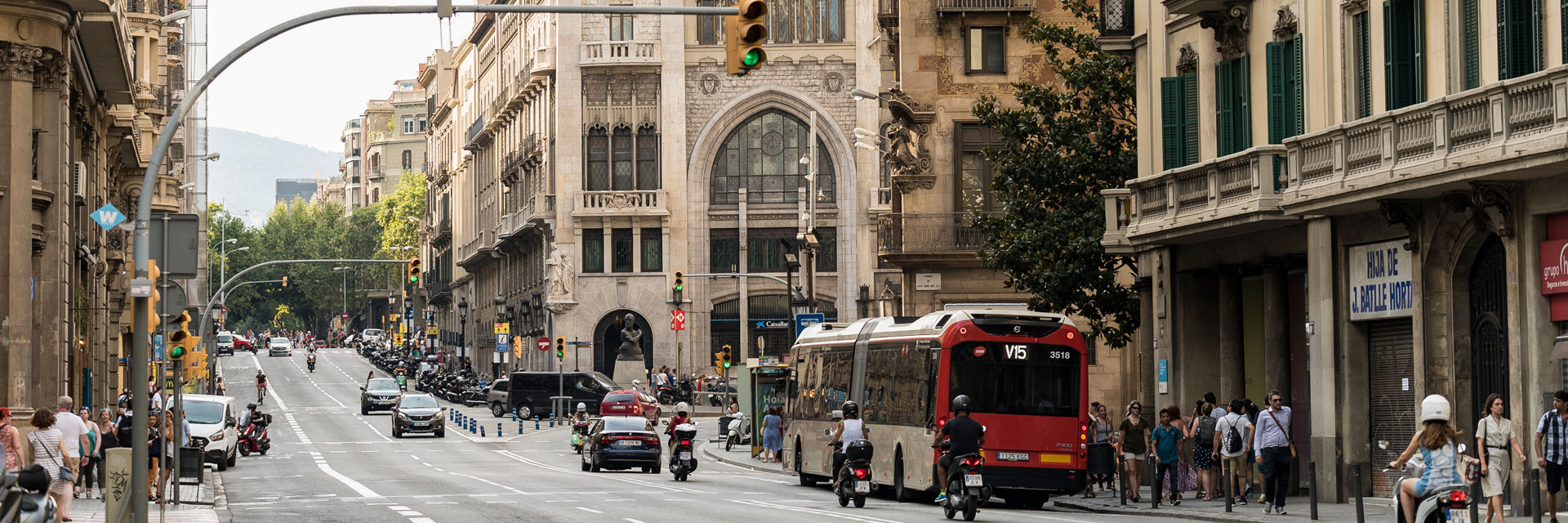
Sea Gateways – Via Laietana
The main objective of the Sea Gateways projects is to improve accessibility and connection to the sea on foot and by bicycle, to create spaces for sea-city interrelation through the main vertebral thoroughfares and secondary transversal corridors capable of linking the spaces of the city with the spaces of the coast, and proposing, if necessary, a new arrangement of the open spaces that facilitates physical and visual access to the sea.
The urban fabric of Barcelona, from Montjuïc to Besòs, is characterised by streets that go all the way to the seafront, although there is only a continuity of road traffic, as the ring road and railway lines act as a barrier. There is a lack of transversal links (mountain-sea) that connect the city to the coast, on foot and by bike. The main theme is to give continuity and fluidity to the “vertical” routes with the “horizontal” routes of the coastal corridor, addressing above all the crossroads and the points of contact and intersection between the two routes. It is a case of making the public space for movement and relaxation as continuous and easily accessible as possible. The rationale of these projects is to physically determine and signpost the routes of public spaces, accessible on foot or by bicycle, that lead from the city to the sea and vice versa.
The Via Laietana gateway is unique compared to the other Sea Gateways, given that the neighbourhood of Sant Pere, Santa Caterina i la Ribera does not have a strong civic thoroughfare for pedestrians and bicycles that is comfortable and reaches all the way to La Barceloneta and the Passeig Marítim. The only road of a certain size that potentially connects the city with the coast is the Via Laietana, on the western edge of the neighbourhood. Currently, the Via Laietana, with its five lanes of two-way traffic, gives high priority to road mobility, to the detriment of pedestrians. With this in mind, the main action proposed is to improve the space for pedestrians and, consequently, to make this road a more comfortable space along its entire route.
What are we doing?
The renovation work on Via Laietana began in 2022 and consists of two phases. The first phase has already been concluded. The second phase is scheduled to finish in June 2025.
-
Create a bus lane heading downwards shared with bicycles, as well as a lane for cars. Heading upwards, there will be a lane for buses and local taxis and a separate cycle lane. The pavement will be symmetrical and the carriageway asymmetrical. This solution allows for 4-metre-wide pavements.
-
Interventions in 4 squares along Via Laietana. These interventions include changes to the paving, new trees and wider footpaths to create a sense of transversality.




